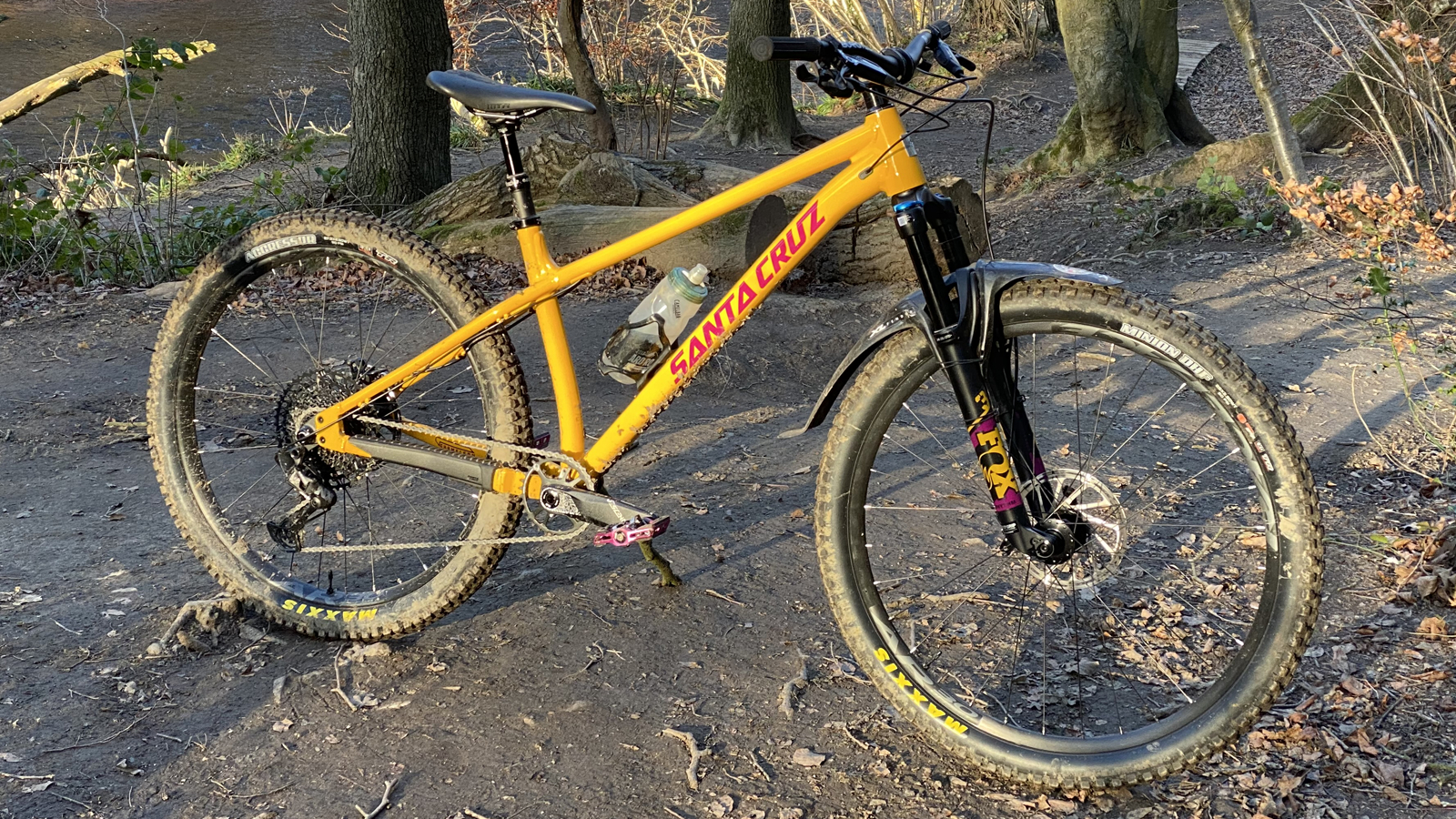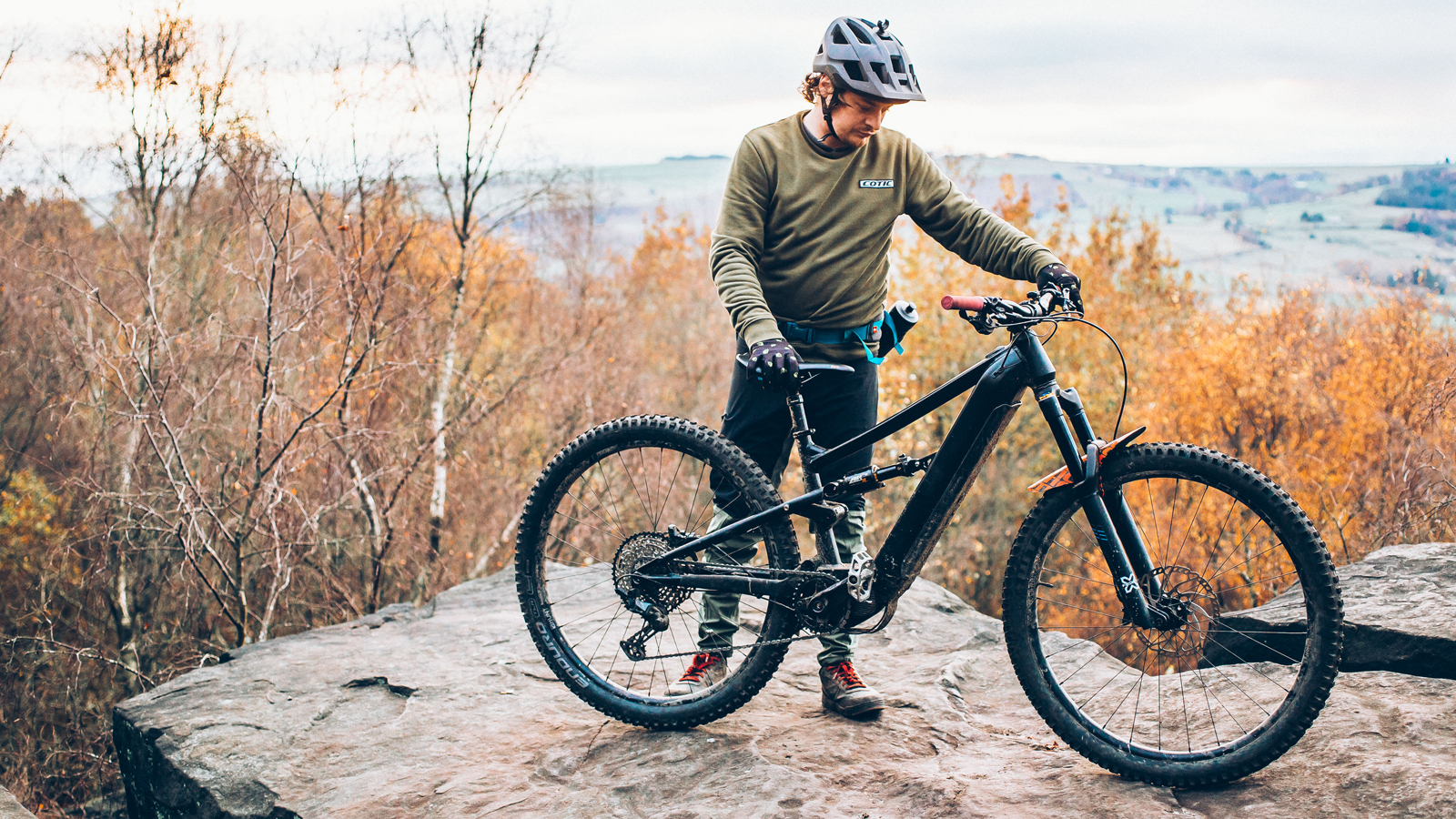Bespoken Word: The price of bikes part one
Everything is getting more expensive, Guy Kesteven takes a look at the cause and effect within the bike industry

Bike prices are higher than they’ve ever been but does that mean we’re getting worse value for money? In the first piece of a two-part investigation, Guy Kesteven looks at the numbers and starts looking for answers by talking to a small UK MTB brand and one of the largest global manufacturers.
This question of rising costs has been brewing for a while but a couple of things really sparked my need to dig into the reasons recently. One was writing a piece on bike development from '97 to now for the 25th anniversary of MBR magazine - which was where I properly started my testing career. That first magazine issue included an ‘ultimate bike’ created from the best cutting edge frame (a Trek carbon ‘Y’ frame), forks (Pace Pro Class), and components (including Hope hydraulic brakes, hubs and bottom bracket, Shimano XT gears, and X-Lite stem) which was offered as a prize worth £3,669.85 for a lucky reader. The second was reviewing the latest version of Santa Cruz’s alloy framed aggro hardtail – the Chameleon – in the same spec that I’d tested it in 2017 when it cost £1,999, rather than £2,999.

Digging deeper
That seems like some big price rises, so I started thinking about how they compare to other stuff we buy. Looking at the factors that seemingly make increased costs inevitable but also trying to work out how some components and brands have bucked the trend and kept prices comparatively low or even dropped them compared to a quarter of a century ago. I also wanted to work out what we’re getting for our money now compared to what we got back then with the ultimate goal of working out whether we were getting taken for a ride when buying our next ride.
In the process, I fired out a set of questions to a raft of industry insiders from a range of brands and while I’m still waiting for answers from most of them - hence the part two next week – the immediate responses I got from UK brand Cotic and global manufacturing superpower Giant and other intel from individuals who didn’t want to be named certainly make for an interesting start to the probing.
Is the only way up?
Before we look at bike pricing we need to stick some flags in the ground about pricing overall. According to the Bank of England, on average you’d have to spend £1,936.58 to buy what £1000 would have got you in 1997. That’s close enough to a doubling of prices but inflation certainly isn’t a straight line across all categories.
For a start, when I had 52 bikes worth nearly £100k double-decked in the back room of my small terraced house for the first MBR bike of the year test back then they were worth more than double what the house was. Five years later that house was worth over four times that amount and there was no way I could have afforded to buy it.
Looking at the breakdown of the ‘ultimate bike’ spec list on the original fax there’s a very interesting story in terms of what prices have spiked and which have actually dropped. No really, there are some bits of bikes that are actually cheaper now than they were on a ‘like for like’ basis that’s actually nothing like ‘like for like’.
To be specific with prices that semi-carbon Trek Y bike frame was £1,000 in 1997 so 30-50 percent of a cutting-edge carbon/alloy frame today. The Pace Pro Class fork was £499 so again 30-50 percent of cutting-edge tech today. However, the XT gears and cassette were £110 then, £160 now so below inflation. The Stratos rear shock was £300 compared to around £370 for a current inline Fox/RockShox damper, which is definitely below inflation. The really interesting one is that the Hope hubs (£210 - £255), bottom bracket (£89 - £95), and the two-pot brakes (£410-£300) were actually more expensive as a complete set up then than they are now.
So what are the manufacturing costs pushing up consumer prices? Materials? Increased tech/complexity? Labour? Investment in better working conditions? Eco compliance? Energy? Shipping? Tax? Marketing? Race sponsorship? Advocacy? Retail paths/expectations? Or is the industry just cranking up the margin at each step to increase profit until they finally hit a ceiling of what hype addicts are prepared to spend? Also, how much difference has Brexit and Covid really made recently, and are we at the top of the sharp rise trend or is it set to continue? And ultimately is the 2022 MTB customer getting better or worse value than a 1997 customer overall?
Like I say I’m still waiting for replies from a bunch of people - I didn’t give them much notice – but I reckon I’ve got enough for some interesting insight before we round everything up next.
Dave Ward from Giant UK pitched in with his perspective of one of the world’s largest bike manufacturers who are in a unique position of building bikes from raw materials right through to complete bikes sold by its dealer network.
“There’s no way that you can compare a bike from 1997 with a bike now. However, although you can feel the differences in the ride quality and performance, or the strength when you test them, a lot of those technological advances are hidden. It takes 32 very skilled people, 13 days to build a Giant Advanced carbon frame. The only machines used in the process are the one that takes the carbon filament and makes it into the different custom carbon sheets for each part of the frame. Then there’s the autoclave oven at the far end of the process that essentially bakes and compresses the frame. Everything between that – and the final finishing and assembly is all done by hand.
"Materials can make a massive difference too. For example, the cost of the resins and carbon used in an Advanced SL frame is double the price of those used in an Advanced Pro, and even though we use an additional robot lay-up machine to get the smallest pieces perfectly placed it takes twice as much time to make an Advanced SL.
"Even alloy frame construction has got far more complicated than people realize. They just see the same alloy number and ‘hydroformed’ on the frame but there are so many stages of extrusion, shaping, and butting that go into a Giant alloy frame and the machinery investment is massive. If you’re a premium brand you literally have to put your stamp on how you make your bikes and if you rode a modern bike it would be night and day different to one from 1997.” And Dave should know as he was working at Stif in Leeds when they built up that 'ultimate bike’ for MBR.

At the other end of the spectrum, Cy Turner heads up relatively tiny UK firm Cotic:
"We definitely have a different perspective to most as while we’ve played around with custom tubes and various evolutions Cotic have used the same Reynolds 853 base material since 2003 and price rises there are broadly in line with inflation. Ever since I was working from my bedroom, then garage we’ve always been direct sale too which has kept things steady in terms of our route to market.
"Obviously, there’s more to deal with on our full-suspension bikes but that means the only thing we’re really exposed to on hardtail/gravel frames are component costs and the exchange rate. Changes in currency really affect us too as we can’t afford to hedge fund when the ratio is in our favor. Sometimes that’s a win, but as an overall trend, it’s definitely been going one way. In the 2008 meltdown we went from $2 to $1.34 US overnight just as we were about to get a batch of frames delivered. That meant a Soul hardtail went from £420 to £490 in a month. Sometimes it goes the other way though. In 2016-2018 it dropped again which caused 10-12 percent price rises but interestingly the pound bounced back really hard against the dollar at Brexit which offset some of the increased Brexit costs and gave some welcome insulation for a bit. However, while that product was 10 percent cheaper, shipping was suddenly 400 percent more. Obviously, you can get fewer frames in a container than components so that hits frames and complete bike prices much harder too.
"That’s not to say the supply issue hasn’t raised material, manufacturing, and transport costs for components dramatically too though. The prices of our parts orders are rising every six months ATMO on stuff already ordered but with a lead time of at best a year now, not 60 days. So that’s a minimum of two price increases before it’s delivered. The emails we get from suppliers are massively apologetic and it feels like they’re trying to hold off on rises to the last minute but at some point, costs get passed on. Basically, people are now seeing the real cost. There’s nothing being sold off cheap because ‘the corners of the cupboard are empty’.
"We are having good years in cash terms because we’re not having to discount but the underlying gross margin is the same as it always has been. Nobody wants to put the prices up, nobody is making any more profit. Least I don’t think anyone is. There’s certainly no one charging 20 percent over the list price like they are with cars that are on waiting lists. What’s vanished, surpluses and price shagging which has always been an issue in the industry."

Then and now
Cy goes on, "You have to look at what you can get now too, the potential to spend is so much greater. When I started you could maybe spend £600 on a set of Mavic CrossMax wheels but now you can easily spend four times that on carbon wheels. Carbon frames are totally different in terms of construction and strength (remember everyone going mental about how you couldn’t possibly ride over rocks on a Scott Ransom or Carbon Nomad) forks are like watches inside now and that costs money. There is so much more technology in a bike now and the performance is incomparable. I mean the Cascade gravel bike we’ve just launched is almost certainly a better MTB than our original Soul.”
While I’m still waiting on official replies from other brands some of the snapshots I’ve got back are really interesting - if anonymous. So while I’m signing off here because this is already turning into a monster, there is plenty more to unpack next week.

Guy Kesteven has been working on Bike Perfect since its launch in 2019. He started writing and testing for bike mags in 1996. Since then he’s written several million words about several thousand test bikes and a ridiculous amount of riding gear. He’s also penned a handful of bike-related books and he reviews MTBs over on YouTube.
Current rides: Cervelo ZFS-5, Specialized Chisel, custom Nicolai enduro tandem, Landescape/Swallow custom gravel tandem
Height: 180cm
Weight: 69kg
